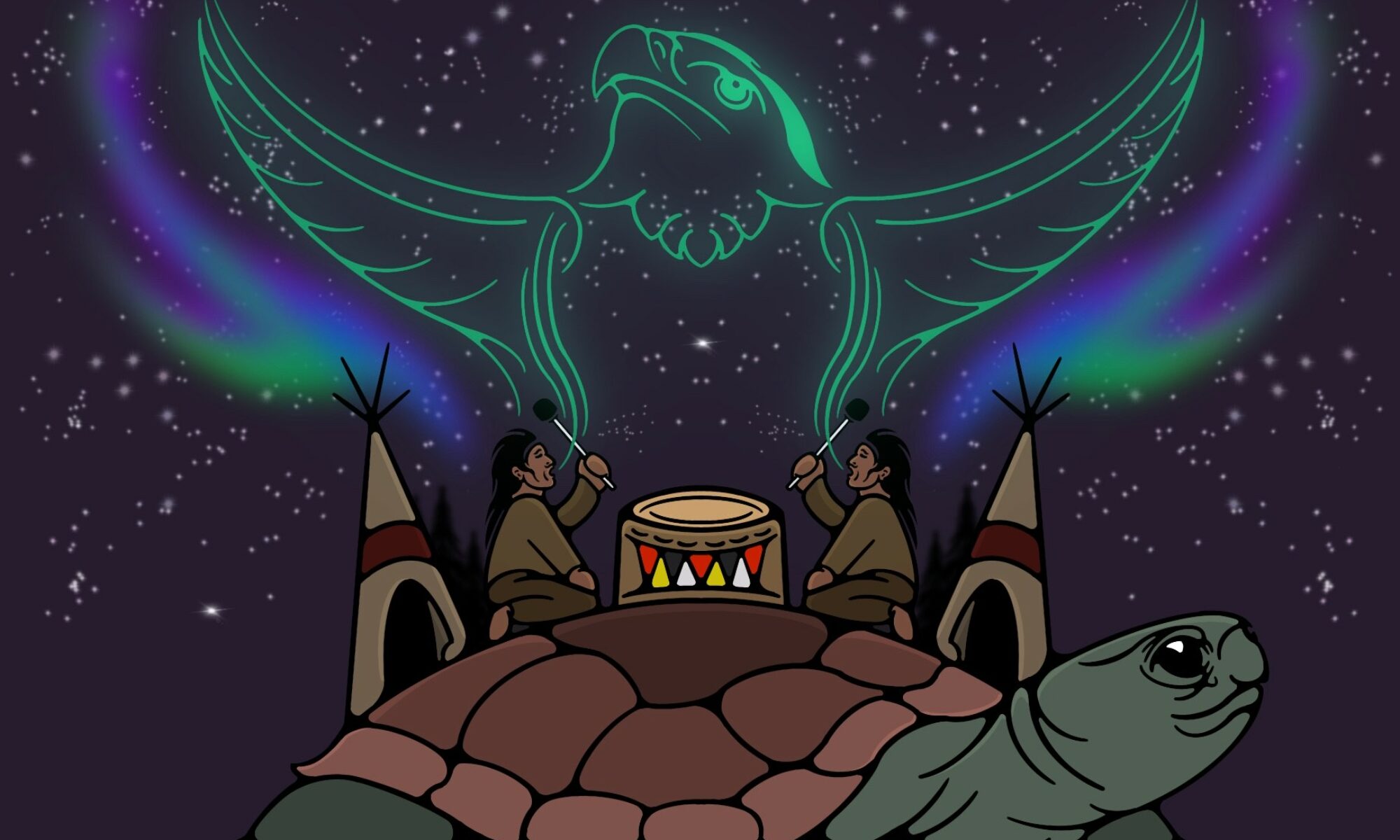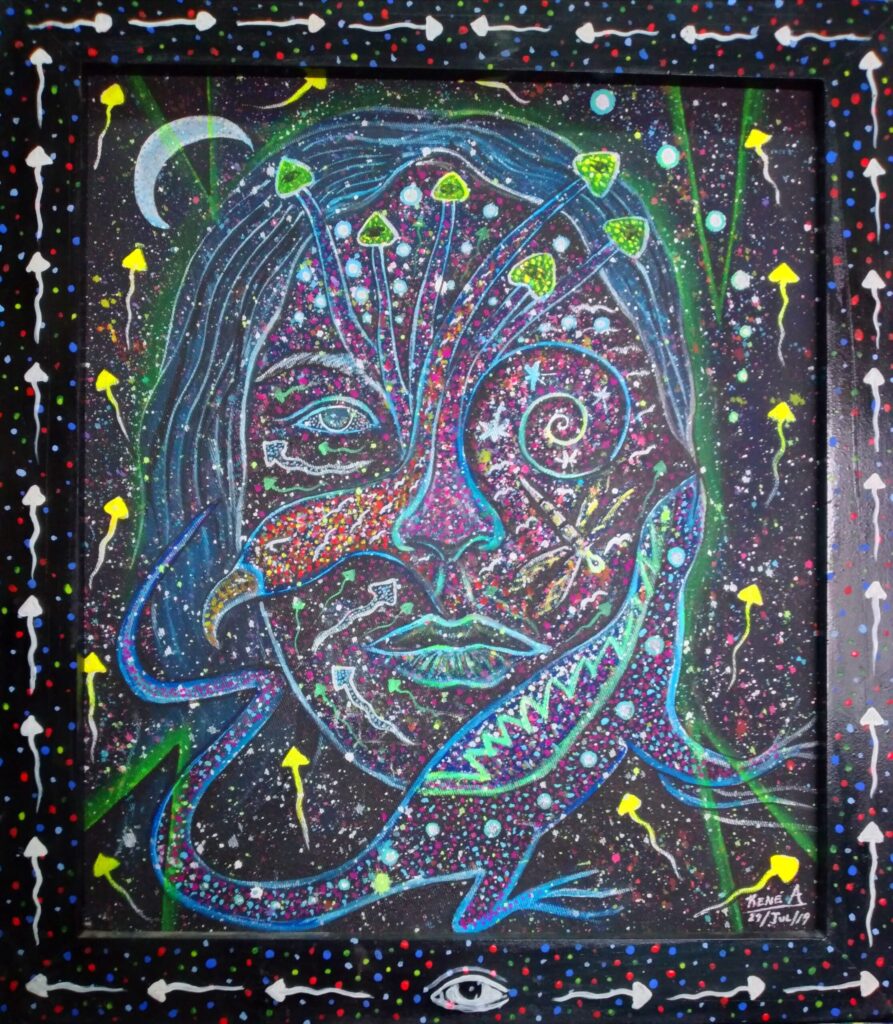
By René Alvarado Martínez y Juan G. Sánchez Martínez / Translated from Spanish by Lorrie Jayne
René Alvarado Martínez hails from San Andrés Hidalgo, Huautla de Jiménez, in the northeast region of Oaxaca, México. As he tells it, from the time he was a child, René has created from earthen clay and reproduced images that he saw in free texts and books. He also remembers being seven and beginning to notice visitors arriving at his house in search of his father, a practitioner of traditional medicine, who guided the community with candles and, on a few rare occasions with the “sacred little ones”: the medicinal Mazatec mushroom. His mother, born in Rio Santiago, Huatla de Jimenez, the birthplace of the celebrated priestess María Sabina, also plays a part in his work.
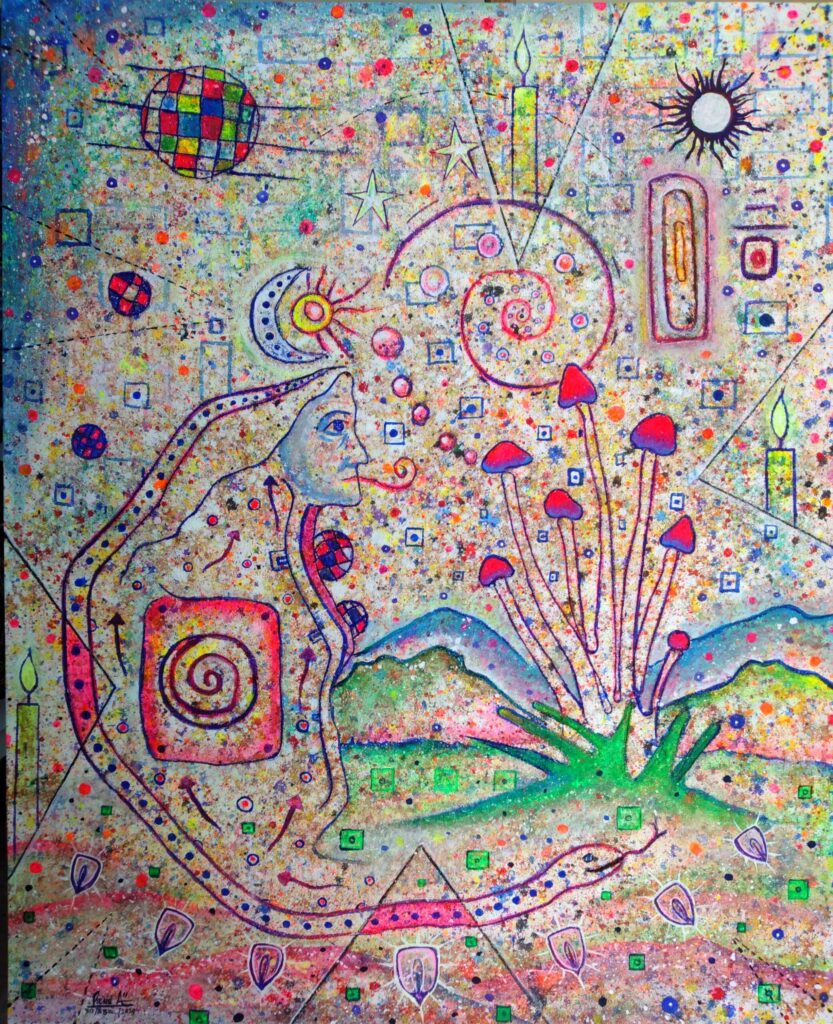
Through the course of thousands of years, indigenous peoples throughout the world have kept track of their experiences with visionary plants and mushrooms, and have represented their spiritual knowledge through different codes and mediums. However, in recent years, the use of these medicines has made its way into the imagination of “arts and literature”in mainstream languages and circles. “Mushrooms and visionary plants,” have been referred to as “drugs” (from the Spanish-Arabic root ‘hatruka’ meaning lie), or “hallucinogens” (from the latin ‘alucinari’, to ramble senselessly), as “psychotropics” (from the Greek ‘psyche,’ mind/spirit, and ‘topein,’ an altered state), as “psychedelics” (from the Greek ‘psyche,’ mind/spirit, and ‘delos,’ to manifest oneself), and as “entheogens” (from the Greek ‘en,’ within, ‘theos,’ God, ‘gen,’ to be born) as plants that allow God to flower within- this latest expression has been proposed by Gordon Wasson, Jonathan Ott, and Carl Ruck. René Alvarado Martínez’ work is inspired by the Mazatec practice of ingestion of “the sacred little ones,” the mushrooms/medicines, who René uses the word “entheogens” to name.
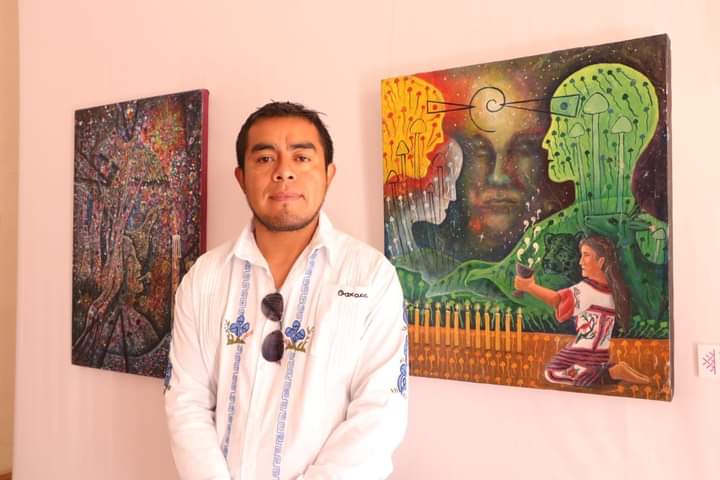
Once he was in high school, René forayed into techniques such as acrylics, pastels, and stained-glass. Later he migrated to the city of Tecamachalco, in the state of Puebla, where he developed oil painting and other mixed techniques. René has participated in more than fifty collective and individual exhibitions. His work (paintings textured with Mazatec dyes and earth, carvings with obsidian on clay, ritual sculptures, and lamps) can be found in private collections in California, New York, Colombia, Argentina, Japan, Australia, and in multiple cities in Mexico.
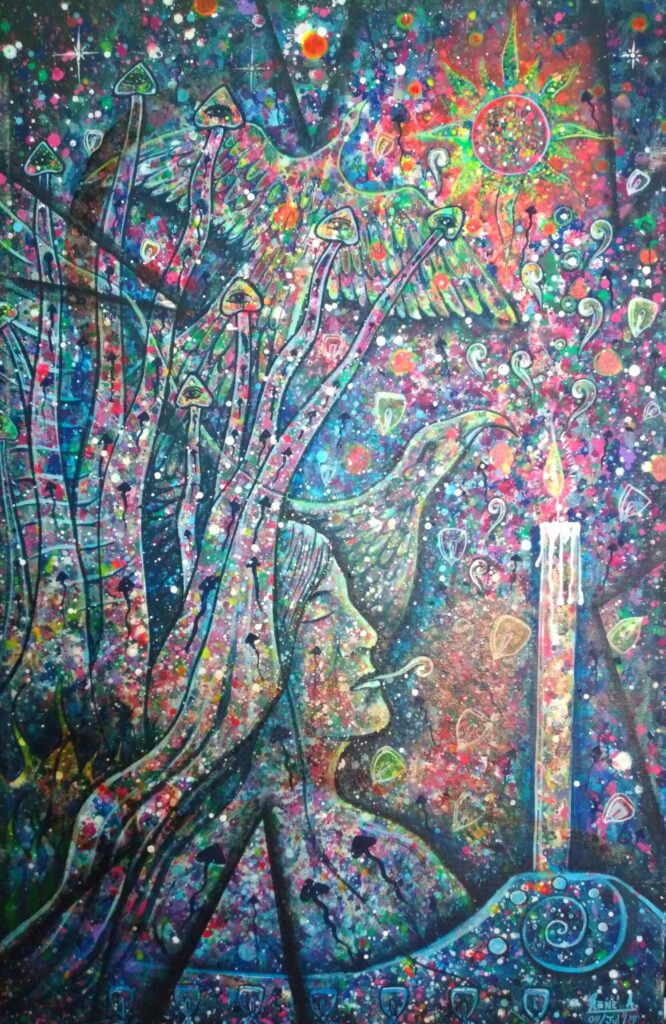
In the words of the artist:
“During my career I have painted with colors, watercolors, acrylics, pastels, ink, drypoint, oils, mixed techniques, engravings, and natural dyes from the Mazatec region. I am also currently sculpting with clay, branches, and corrugated cardboard. Through painting I am planting an awareness of ”Human Being” in every extension of the word. I believe that through art a new world can be built. Art is an expression, a feeling, a language, a spirit of the soul made matter.”
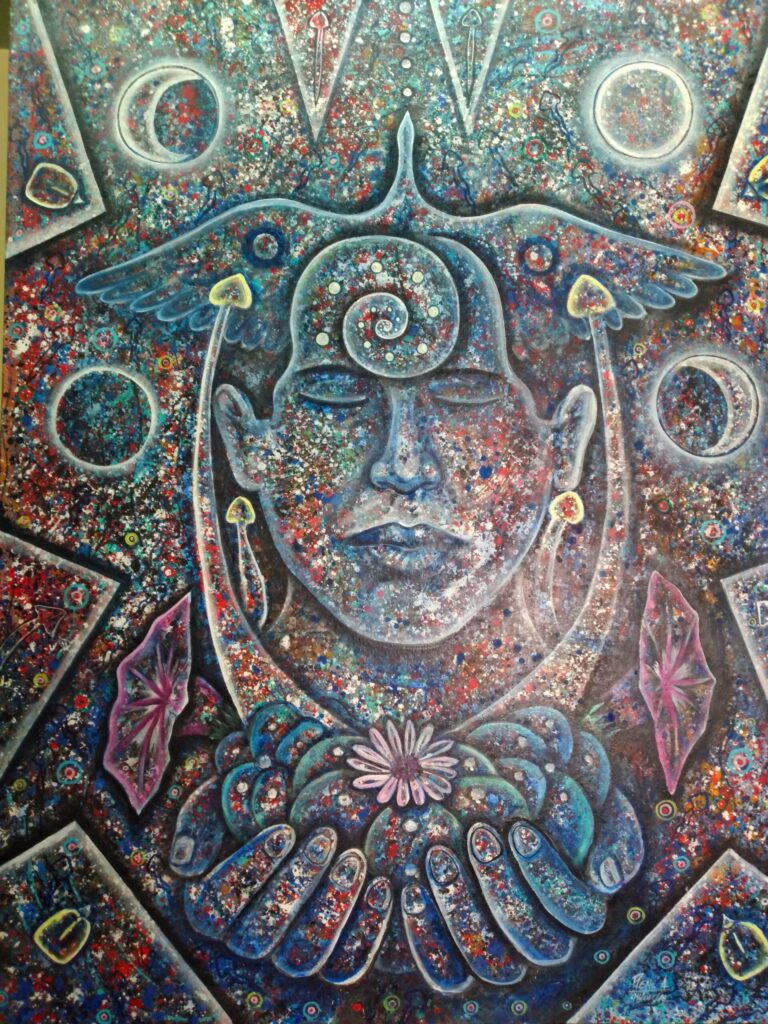
His own iconography runs throughout René Alvarado Martínez’ work: beneath the moon, the seeds of corn align with the corners of the universe; the “sacred little ones” and the candles guide the trip and the trance that reveals the spiraling snail, that primordial image that René identifies with unity and flow; beneath the stars, the serpents, wisdom and renovation, interlace man and woman, the last protectress of the “the sacred little ones,” the creative force, the cosmic mother. Just as it does in María Sabina’s songs and evening ceremonies, Christian iconography and vocabulary sometimes superimposes itself upon the visions of the sacred mushrooms. Today, some of the elders of the community celebrate René’s work.
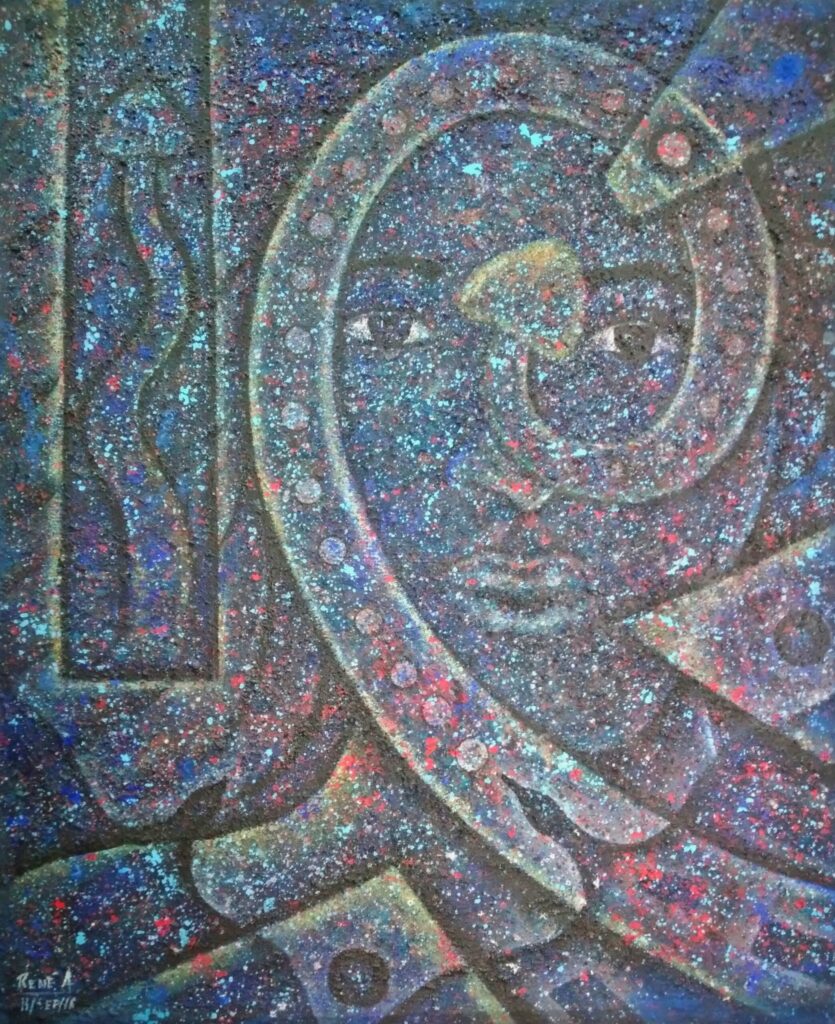
As in mystic poetry, René’s work captures the ecstasy of the curandero who looks into the abyss of mystery, and brings back with him knowledge of the origin of illness, the root of the cure. But these works also reflect the pillars of Mazatec celebrations that are related to the agricultural calendar- the seven maizes, the offerings to the hills and mountains, and the huehuentones, groups who dress for the Day of the Dead, whose songs and drums travel house to house, carrying advice and awareness, greeting everyone as if they were their ancestors, their family.
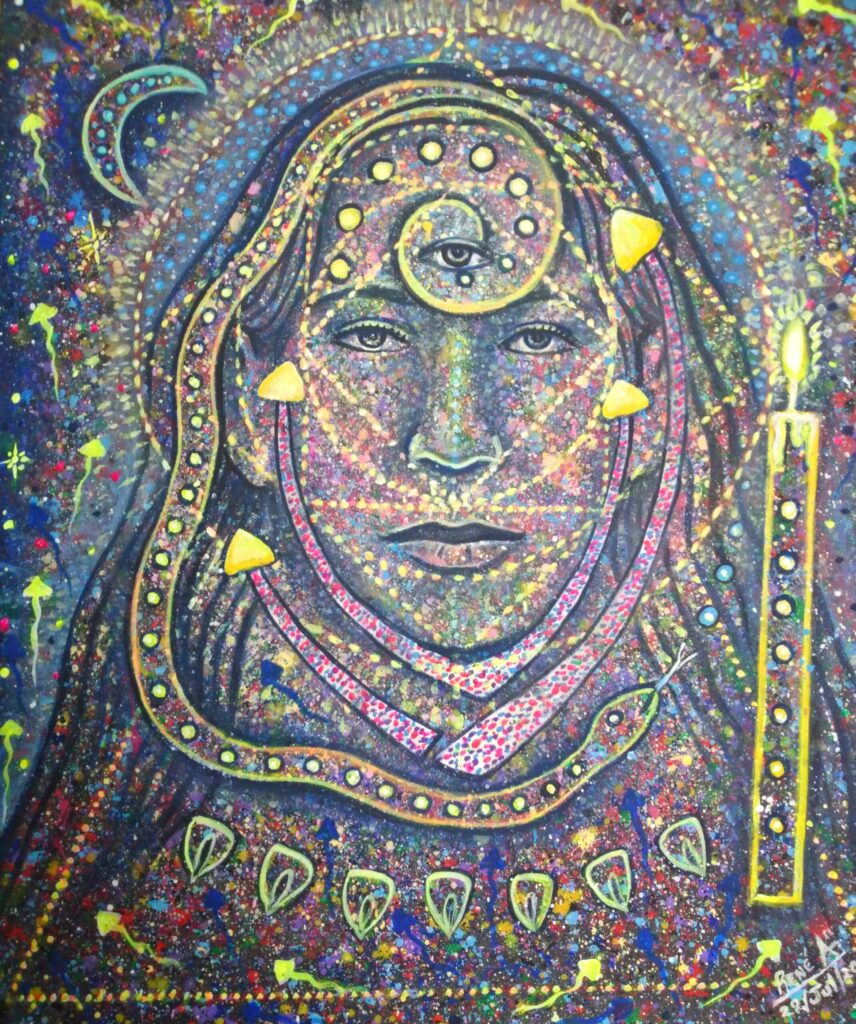
René explains:
In my works I give expression to our ancestral knowledge and the elements that are used in a ceremony that includes entheogens: the candle, the sahumerio or copal burner, and the mushrooms. I also bring forth the sacred elements: the moon, the sun, and the stars! I immortalize and share our culture, our roots, our people, our town, our customs and traditions, the connection with our surroundings, nature itself, the supernatural, such as the chikones, guardians of the mountains, the rivers, the caves, the wind- manifesting within as well as outside of ritual, in our history and our cosmovision which contains the Sierra Mazateca. I rescue our mother tongue, since it is the net of communication between the living and the dead, along with our ancestors, deities and guardians and the knowledge that they emanate. Visionary art.
More regarding “the sacred little ones” and mazatec art
The art of Filogonio Naxín bets upon the freedom of shapes. Reaching beyond galleries, museums and art schools, Naxín dislocates definitions of “traditional” and visualizes bridges in oil, acrylic, and watercolor with which he crosses from the Mazatec language to the techniques of Western art.
